Simple Bruschetta
Good tomatoes are the thing that matters most when it comes to making bruschetta - the classic Italian antipasto. It is such a simple preparation that paying attention to the little details matters.
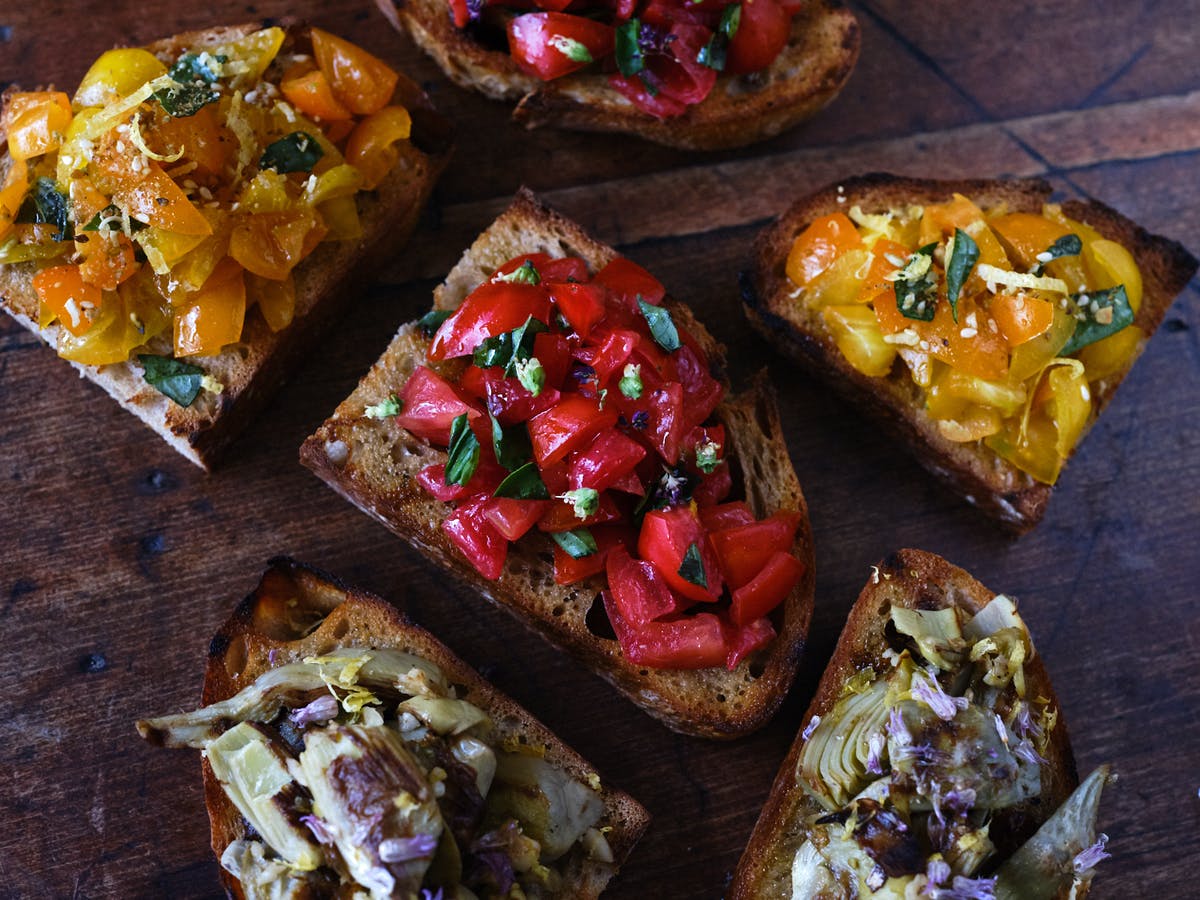
Summer might be the very best time of year to make bruschetta, but there's no reason you can't make great it year round. The rules for summer apply - if it's late summer and tomatoes are vivid and ripe, saturated with flavor, you'll be all good. Good tomatoes are the thing that matters most when it comes to making this classic, open-faced Italian antipasto. Bruschetta is such a simple preparation it means paying attention to the little details matters. In spring that might mean using great artichokes, or caramelized onions and squash in winter. Today I'm going to talk through how I make my favorite version of this easy appetizer and include a few simple, seasonal variations as well.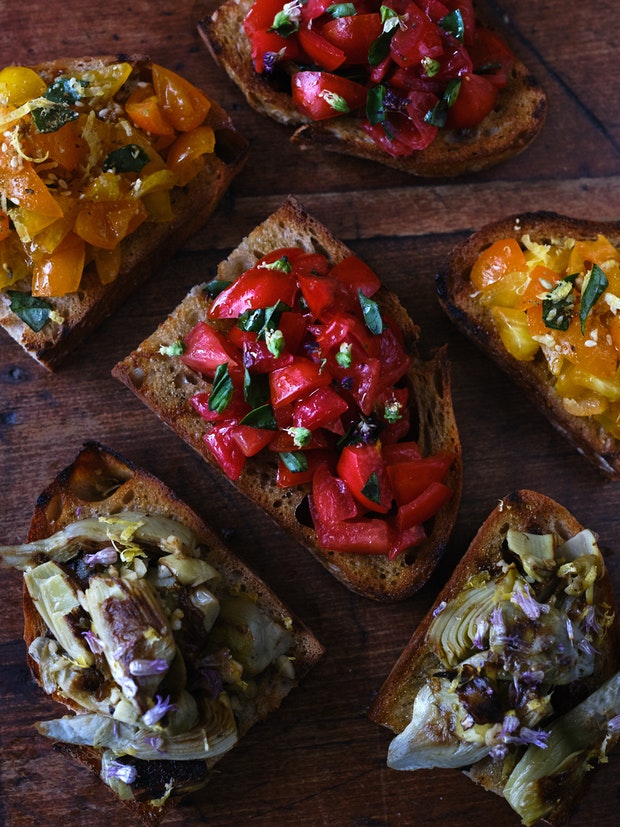
The Importance of Using Good Ingredients
The first rule of making great bruschetta is to use the best ingredients you can get. You're using such a short list of ingredients, it's important they're all super flavorful. Use fragrant, golden extra-virgin olive oil, vinegar that tastes good, and in-season, ripe tomatoes. We'll talk about choosing bread next, but using good bread and tomatoes and olive oil is everything here and dictates whether your results will be "pretty good", or "omg so good."
What Kind of Bread Should you Use for Bruschetta?
In short, you want a hearty bread that can stand up to grilling. Marcella Hazan says, "the name bruschetta comes from bruscare, which means "to roast over coals" the original and still the best way of toasting the bread." She calls for Italian whole wheat bread (pane integrale) sliced 1 1/2 inches thick. I usually use whatever hearty sourdough or country loaf I have on hand at the time. If you're baking homemade sourdough, by all means use that. Bruschetta is a great way to use up day(s)-old bread. Many sources will tell you 1/2-inch slices are the goal, and Marcella weighs in suggesting we use bread sliced 1 1/2-inches thick. I find that slices 1/2-inch to 3/4-inch thick hit the sweet spot where you can get a good ratio of topping to bread in each bite.
That said, let me back up a minute and note that a lot of the bruschetta I see photos of are actually crostini - small two-bite toasts sliced from a white baguette-style bread and topped with a tomato mixture. That's not what I'm talking about today. The versions I love uses hearty slabs of bread, preferably with a dense crumb. It is grilled, rubbed well with garlic (both sides!), and topped. These aren't two-bite affairs, they're more like 5-6.
As far as grilling the bread? In the A16: Food+Wine cookbook they note, "the word bruschetta, which is derived from bruciare, "to burn" implies that some charring on the bread is desirable." Assuming both sources are right about the origins of the name bruschetta, we want to grill our bread, and get a kiss of the burn you get from grilling. If you don't have access to a grill, second choice would be to use a broiler. Third option, use a stovetop grill pan.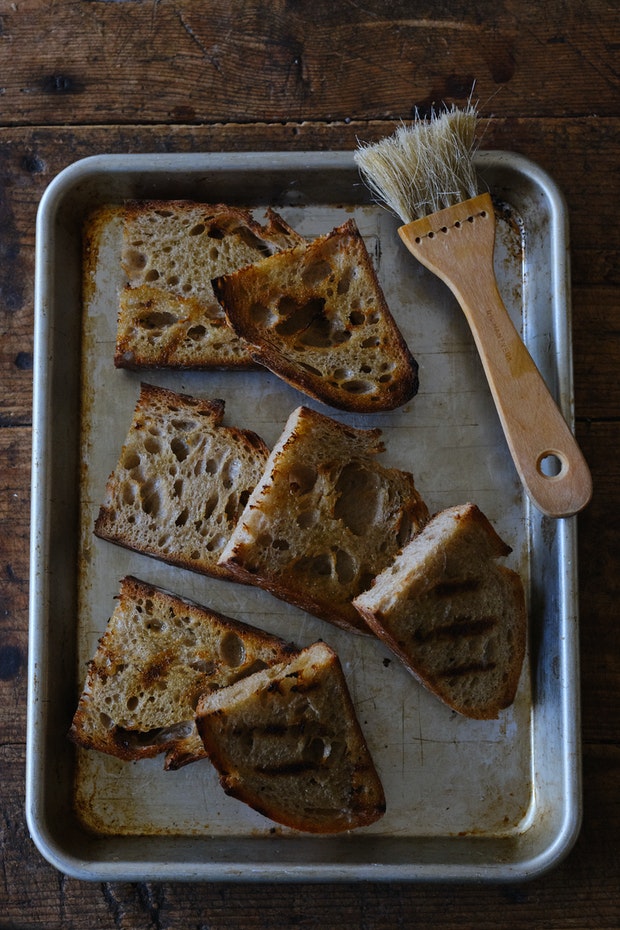
A Tip for Grilling Bread
Brush each slice with a bit of extra-virgin olive oil before grilling. I find this helps keep the bread from drying out as it is toasting. As soon as you've removed the bread from the grill, and it is cool enough to handle, rub both sides vigorously with a peeled clove of garlic. Especially if you love garlic as much as I do.
Today's Bruschetta Recipe
It's my favorite, simple, use-your-best-tomatoes version. Red tomatoes are tossed with olive oil, salt, torn ribbons of basil, and a splash of vinegar. I'll include the recipe for this down below, but you can use the same approach for the other variations I list here.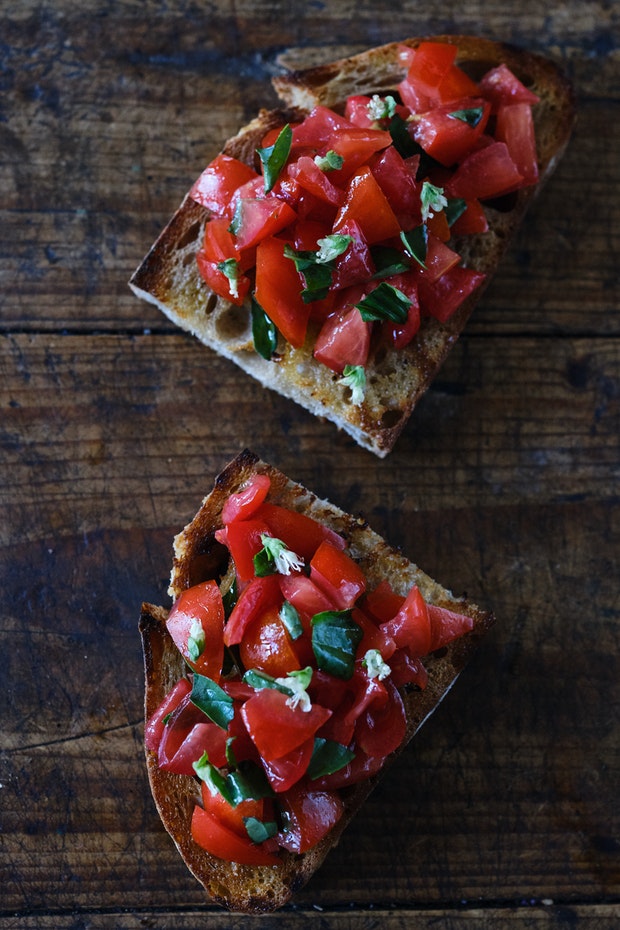
What Type of Tomatoes to Use in Bruschetta?
The short answer here is: use the absolutely best tomatoes you can find. I’m talking peak season, ripe, and flavorful tomatoes. Preferably the kind you find in the markets in late summer. If your tomatoes are pale, sad, and flavorless, I’d recommend making something else. As far as tomato varietals go, loot for Roma tomatoes, or heirlooms. And if your tomatoes are super juicy, it’s ok to drain off the extra tomato juices.
Let's Talk about the Vinegar Component
I think of the vinegar in bruschetta as a seasoning component of sorts. It brings acidity to the overall preparation, melds with the olive oil and contributes some balance. I'll say it outright. You can't use awful vinegar here and get good results, and there's a lot of it out there. I made so much bruschetta in my twenties using harsh vinegars, and I'm just sad it took me a while to find the magic of good ones. Two favorite vinegars top of mind right now include Katz vinegars, and Brightland's Parasol.
If you taste your vinegar and wince hard, or if it has a musty smell, consider investing in a new bottle. In Italy you encounter bruschetta using a range of vinegars. I tend to use a favorite white wine vinegar (for this and many salads), but if you have a red wine vinegar, herb vinegar or balsamic vinegar you love, use that. I'd even argue, a squeeze of lemon juice is a better choice than a bad tasting vinegar. If you use lemon juice, add some zest while you're at it. It might not be traditional, but it will be delicious!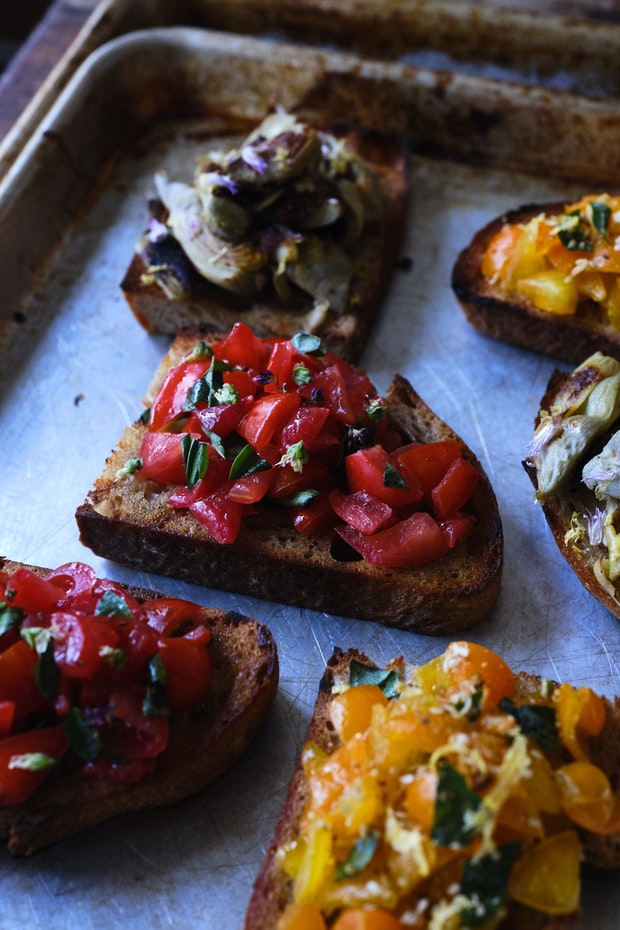
A Few Bruschetta Variations
- Yellow Tomato Bruschetta with Dukkah & Lemon Zest: Yellow teardrop tomatoes tossed with good olive oil, torn basil, a splash of good-tasting white wine vinegar. Pictured below. Finished with lots of lemon zest, fresh basil leaves and a generous sprinkling of dukkah. You can make your dukkah. Or, I also love this Botanica version. If you keep a lemon olive oil on hand, use that for an extra-special version.
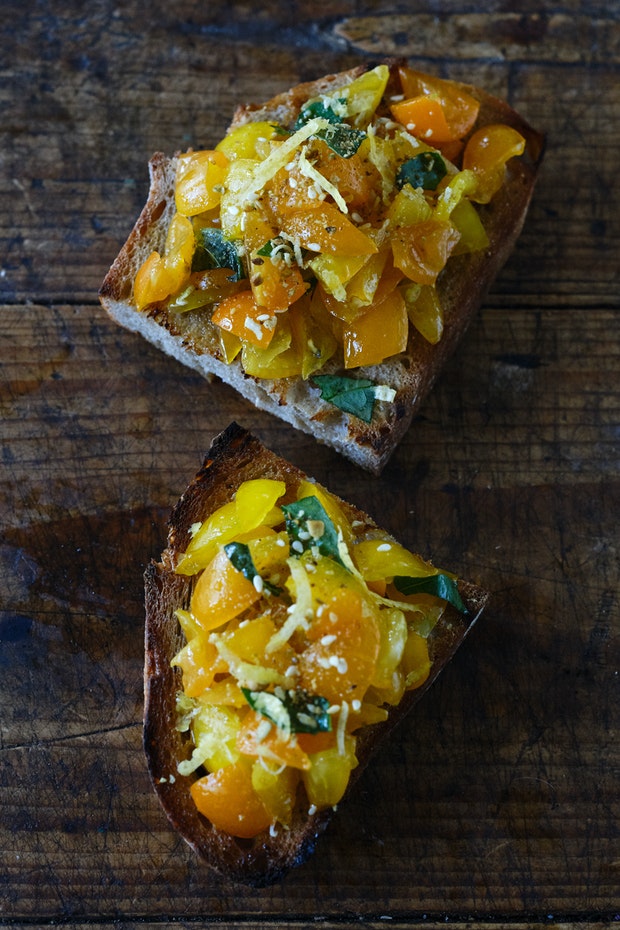
- Pan-blistered Artichoke Bruschetta: Top grilled bread with golden-crusted baby artichokes, drizzle with extra virgin olive oil or lemon olive oil, black pepper, and sprinkle with chives and/or chive flowers. Pictured in the center of the photo below. Always rub with a garlic clove first.
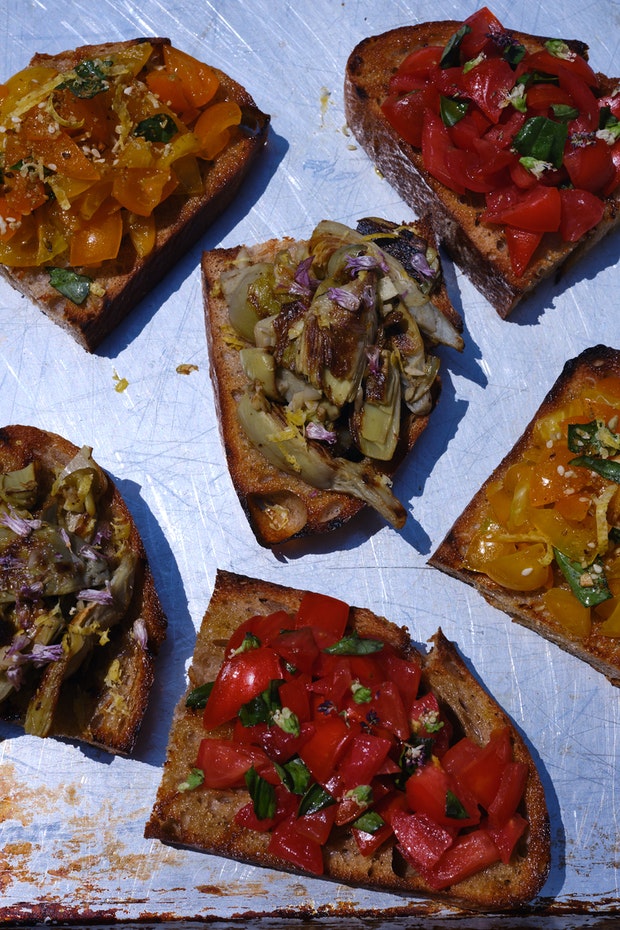
- More ideas: I love a spicy red fresh tomato version drizzled with lots of spicy garlic-chili oil.
- Or a yellow tomato version tossed with a garlic-turmeric oil, and finished with lots of black pepper. This take is zero-percent traditional but everyone loves it.
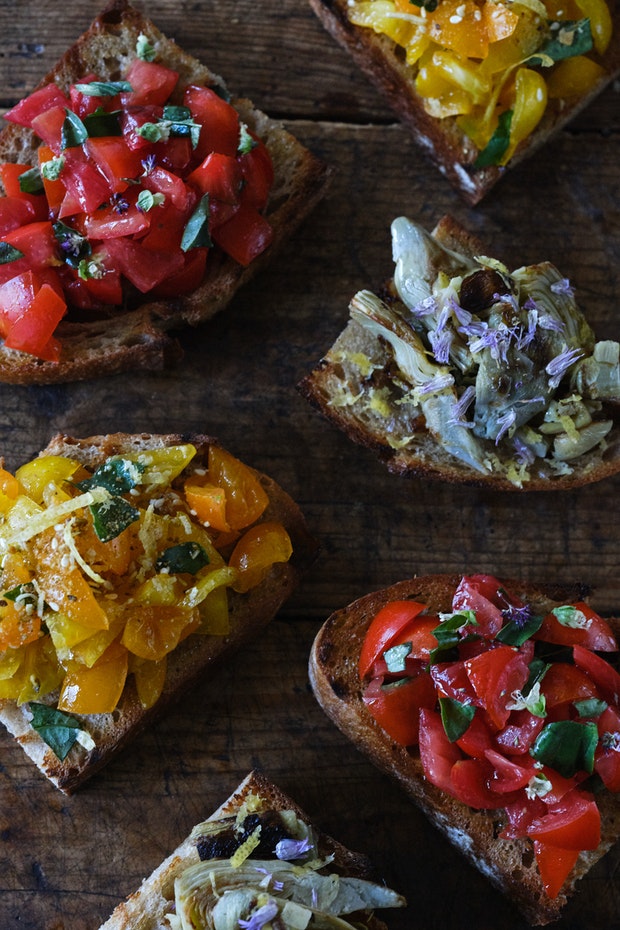
Cold-weather Bruschetta
As I mention above, although I'm writing this in summer - prime tomato and grilling season - you can experiment with variations all year long. Roasted slabs of winter squash or sweet potatoes topped with a salsa verde are great. Or sautéed garlicky winter greens or kale and a bit of grated cheese. Think of all the toppings you can do with roasted mushrooms, roasted beets, and the like. Combine any of these with the last of whatever favorite beans you may have cooked earlier in the week. I'll also note, this is the time of year I shift any bruschetta-making to the broiler from the grill.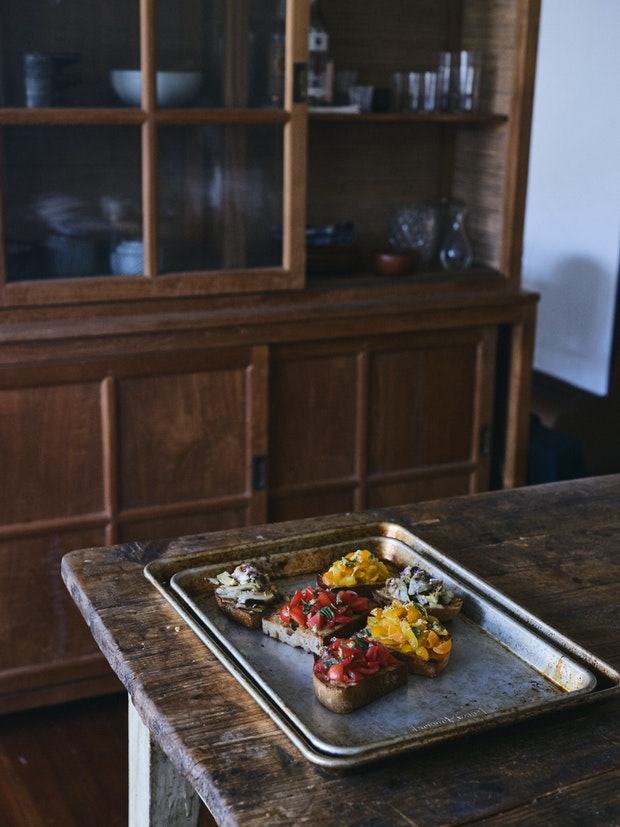
What Type of Tomatoes to Use in Bruschetta?
The short answer here is: use the absolutely best tomatoes you can find. I’m talking peak season, ripe, and flavorful tomatoes. Preferably the kind you find in the markets in late summer. If your tomatoes are pale, sad, and flavorless, I’d recommend making something else. As far as tomato varietals go, loot for Roma tomatoes, or heirlooms. And if your tomatoes are super juicy, it’s ok to drain off the extra tomato juices.
Can Bruschetta Be Made in Advance?
I typically like to make this in real time, but you can make the tomato topping component in advance. Assemble just before serving using freshly grilled or toasted bread. This keeps the bread from getting soggy.
How Long Does Fresh Bruschetta Keep?
You can make the tomato topping a day or so in advance if you like. Or store any leftover in a covered container. The tomato component is also fantastic on omelettes, savory tarts and galettes, sandwiches, and in all sorts of salads.
Can I Freeze Bruschetta?
This is something I’m asked on occasion. I’m going to say no. The spirit of classic bruschetta is a celebration of peak-season tomatoes. It is something to be enjoyed in the moment. If you want a make-ahead option, consider using pesto as a topping. And then use pan-fried frozen artichokes, but skip the tomatoes.
The Best Way to Serve?
I like to keep it casual here. By arranging your antipasto on a large platter or cheese board, people can enjoy them family-style. One consideration I think about is how large to make them. Sometimes I'll do big platters of small bruschetta - just a bit or two - as an appetizer for people to enjoy before a meal. Other times I'll make them more substantial in size if they are meant to play a larger role in the meal.
Bruschetta How to Pronounce?
If you've made it this far, you likely want to pronounce bruschetta properly. It's broo-skeh-tuh. In Italian the "ch" produces a "k" sound.
More Favorite Tomato Recipes
If you have a surplus of tomatoes, I have a some recipe ideas for you! This tomato tart is always a hit. Same goes for this Spaghetti with No-Cook Sauce. Make this favorite salsa. And tomatoes are perfect in this summery coleslaw.
I hope more than anything that this post is a reminder that the simplest food can be the best food. The tail end of a loaf of homemade sourdough, a few tomatoes from the garden along with a sprinkling of whatever herbs and herb flowers are there, garlic, and olive oil? Bruschetta makes a perfect little meal, or party spread.
Simple Bruschetta
Use the most flavorful tomatoes you can find for this recipe. A mix is fine, for example you can do a mix of medium-sized tomatoes, and cherry tomatoes. You can also mix colors if you like! I also love making this using lemon olive oil. Also, I have you cut the tomatoes into 1/2-inch pieces, but you can go larger or smaller to your liking. Or if you’re using cherry tomatoes, you can simply halve them and squeeze them a bit, and use them that way.
- 3 fresh tomatoes, ripe
- A small handful of basil leaves
- 1 teaspoon good-tasting white wine vinegar (or red/balsamic), or to taste
- 1/4 teaspoon sea salt, or to taste
- 4 tablespoons extra-virgin olive oil, plus more for serving
- 3 - 4 sourdough or country-style bread slices (at least 1/2-inch thick)
- 2 cloves garlic, peeled
-
Rinse and dry your tomatoes. Halve each of them, use a finger to remove the seeds, and cut out the cores. Roughly cut the tomatoes into 1/2-inch pieces and place in a medium bowl. Tear the basil into small pieces, and add that as well. Add 2 tablespoons of the olive oil, a small splash of vinegar, and a pinch of salt. Gently toss, taste, adjust if necessary, and set aside.
-
Heat a grill or oven to medium-high. When it’s ready, use the remaining 2 tablespoons of the olive oil to brush across the slices of bread. Grill or bake until well-toasted and golden brown with a hint of char. Flipping when the first side is done. Remove from grilled and when cool enough to handle, rub both sides of each slice of bread with garlic.
-
Cut each slice of bread in half if you like, and top each segment with the tomato mixture. And a finishing drizzle of olive oil is always nice.
Serves 4-6.

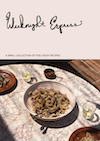
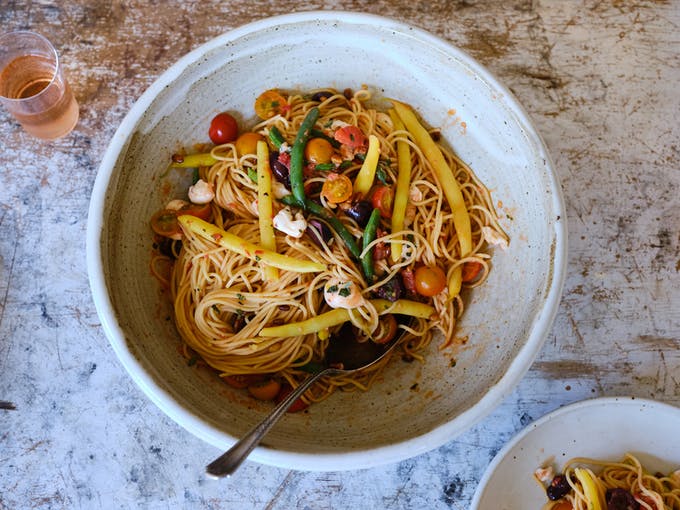
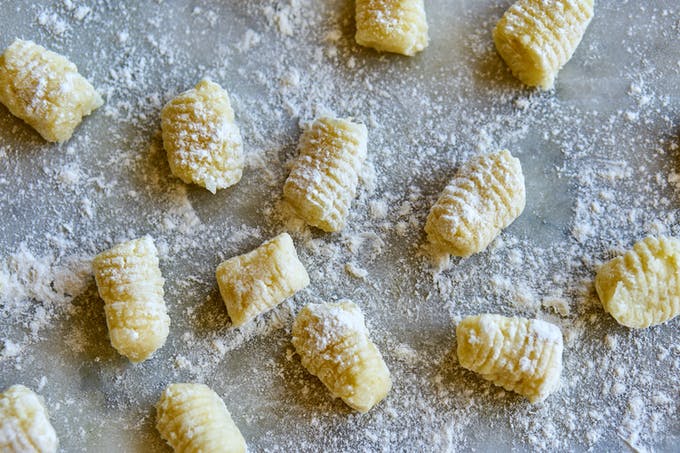
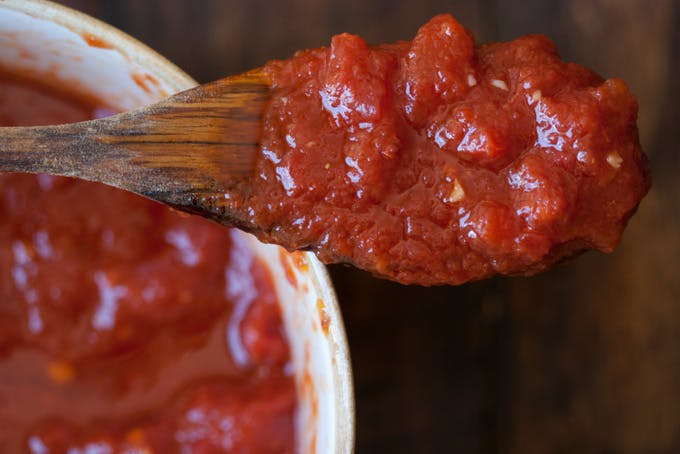
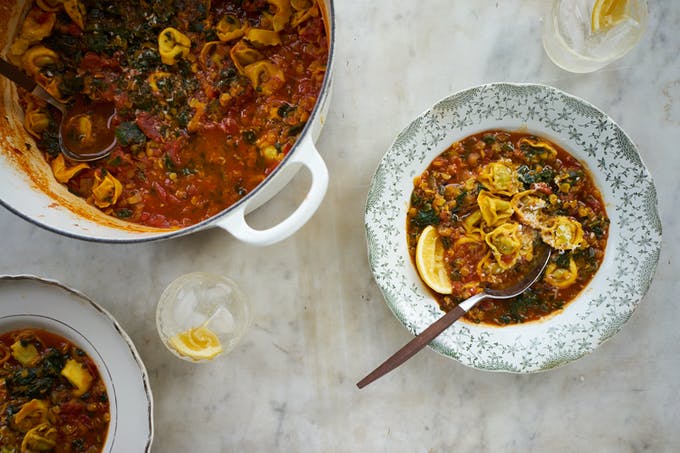
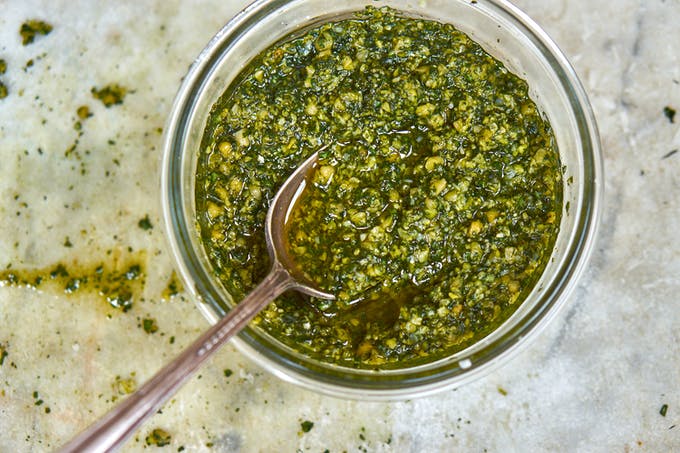
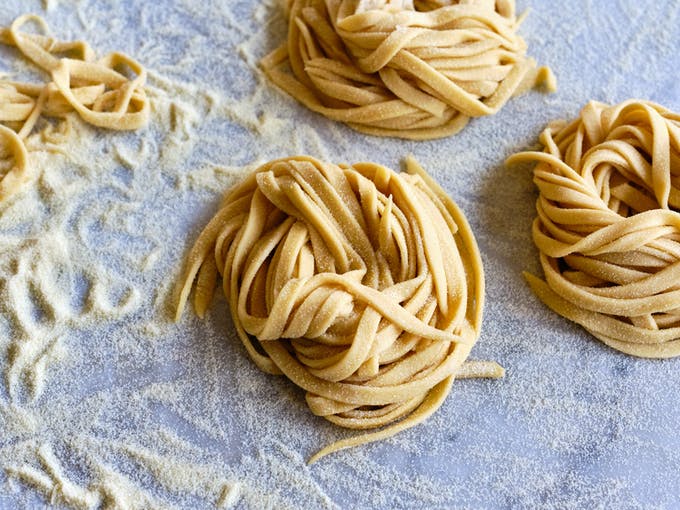
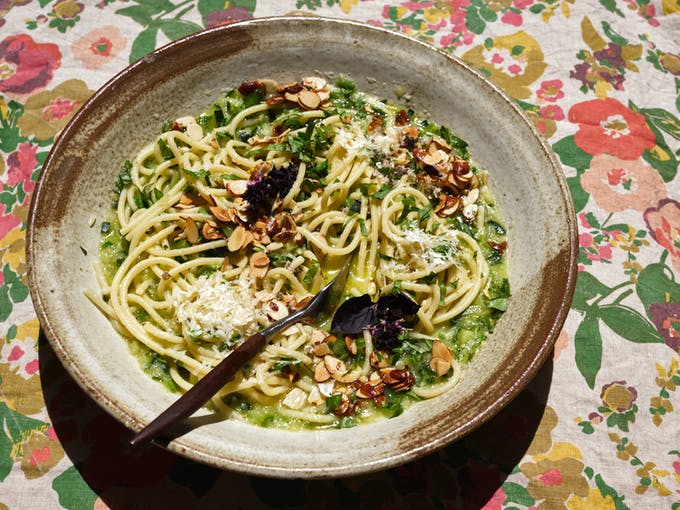

Post Your Comment
Comments
Thanks Heidi for reminding me that even though I am gluten intolerant, there still some things you can make that does not taste like cardboard. Schar makes a deli type gluten free bread that passes for French bread and worked well with your recipe. I'm Italian and this recipe, especially made with home grown tomatoes, brings me back to when I was a kid and Nonie made her 'special bread'. I appreciate all the tips and the easy step by step instructions.
Happy to help Carol!
Some great tips in this article. Mine usually turn out soggy - but this batch was perfect!
Nothing beats this simple tomato bruschetta in summer! Love it! ❤️